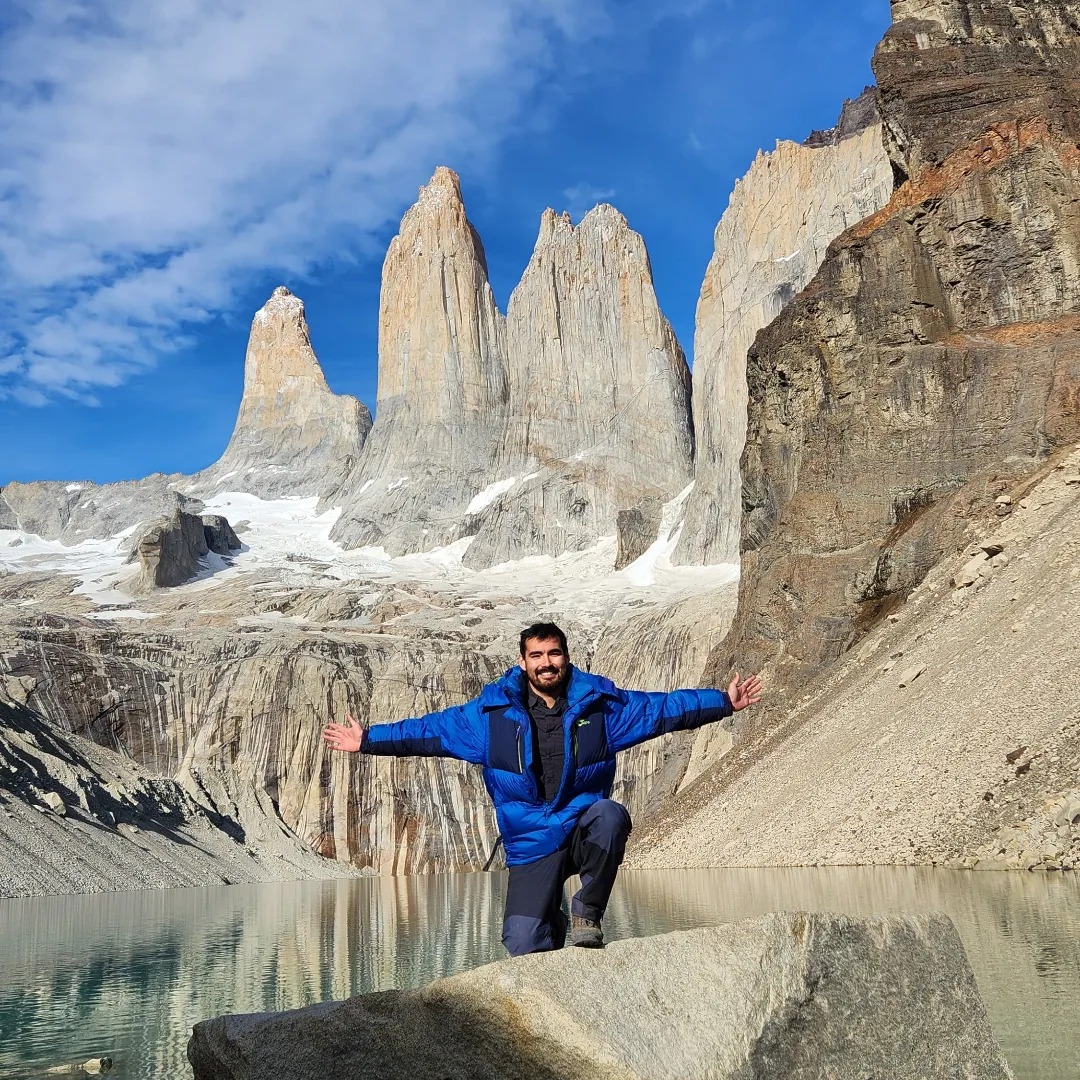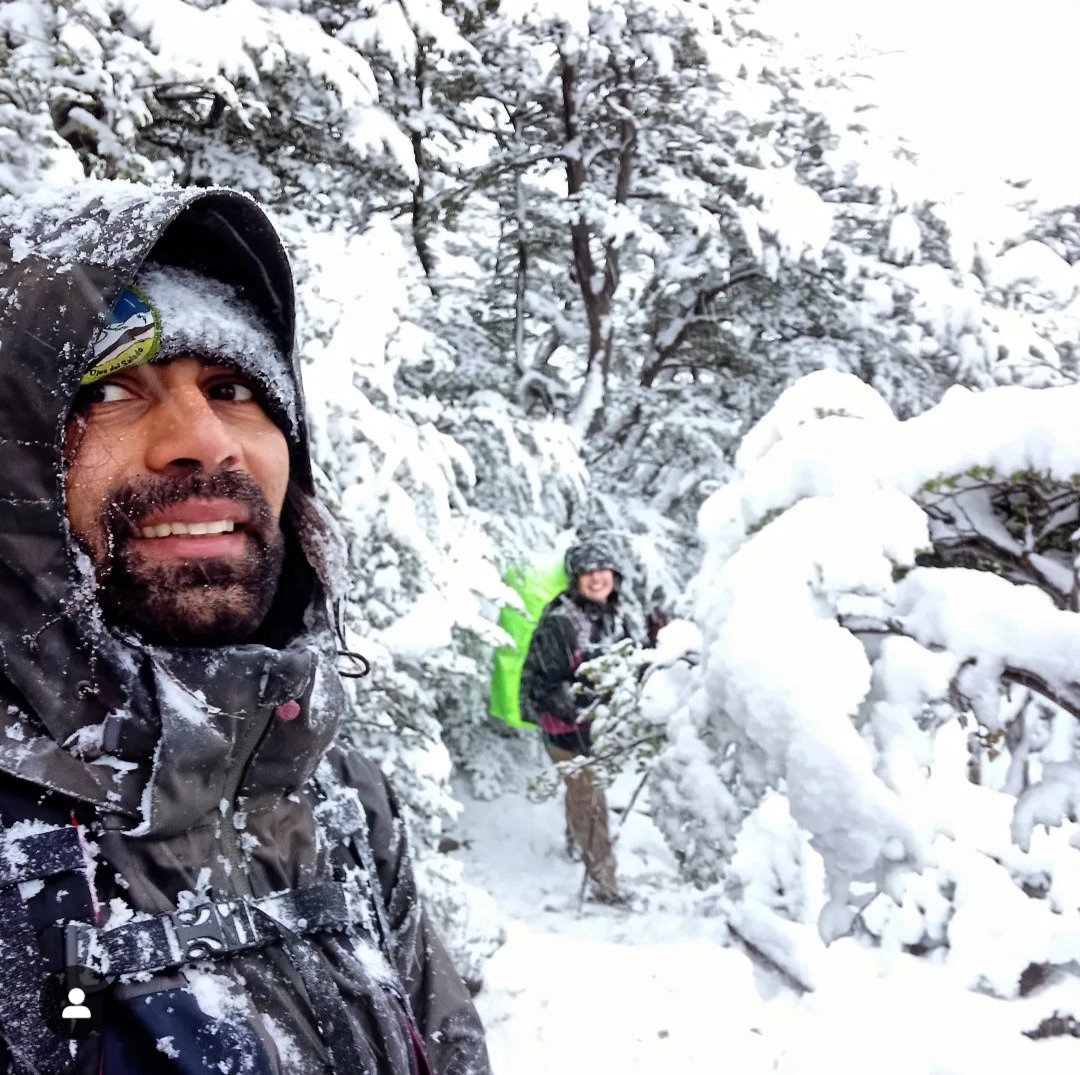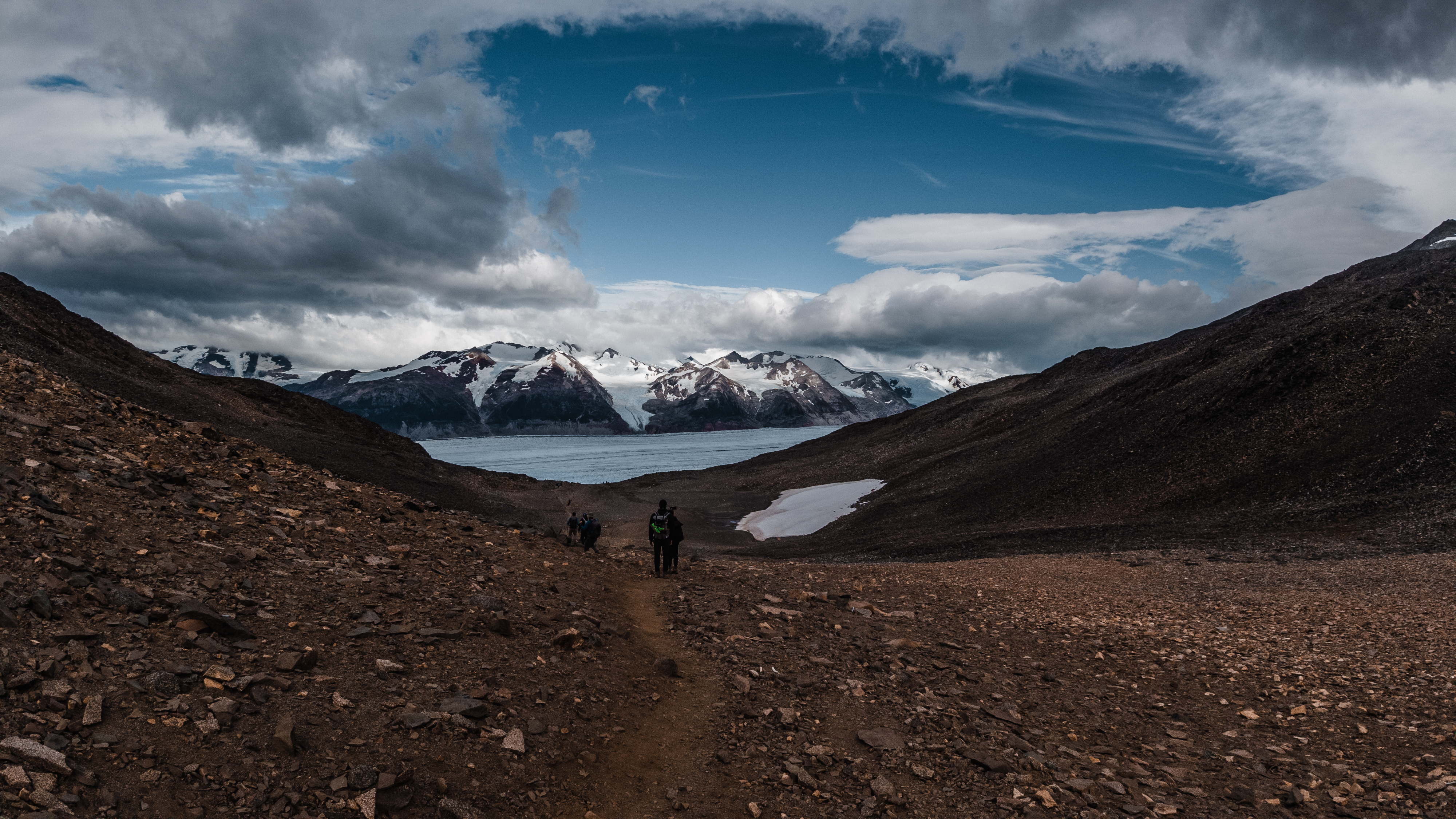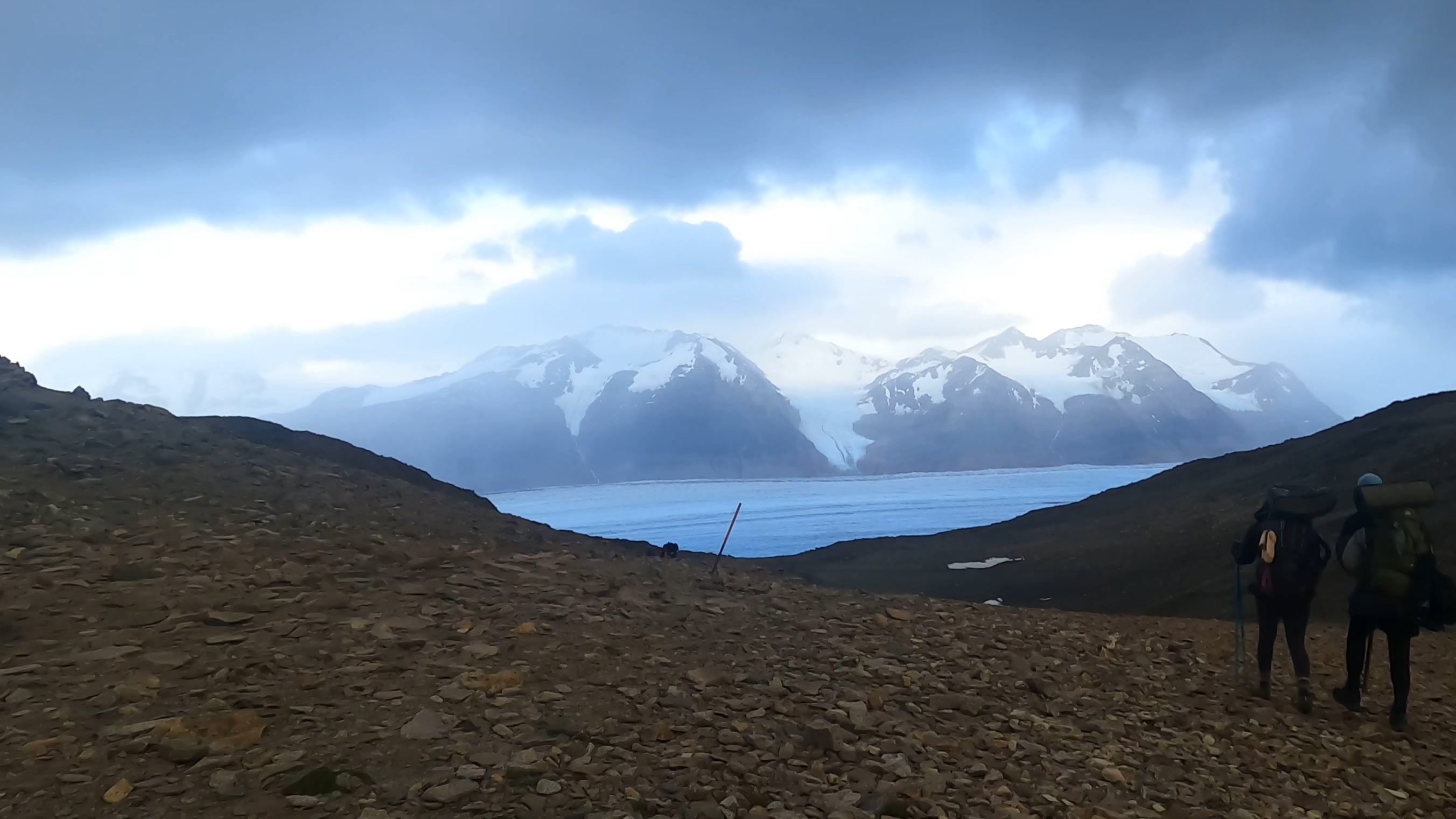Summary
General Information
Parque Nacional Torres del Paine
Macizo del Paine
Country: Chile
Region: Región de Magallanes
Area: Parque Nacional Torres del Paine
Nearest city: Puerto Natales
Number of journeys: 9
Total distance: 116km
Total ascent / descent: 7996m. / 8024m.
Trail Markings: Frecuente y clara
Trail: Claro y marcado
Route type: Circuito
Fauna
Glaciares
Cascadas / Ríos
Flora
Lagos / Lagunas
Bosques
Panorámicas / Paisaje
Transporte público
Difficulty:
I did it
Hiking routes
MACIZO DEL PAINE
Parque Nacional Torres del Paine
Author: David Valdés
Introduction
The Park
This protected area, which is part of the SNASPE (National System of Protected Forest Areas in the State of Chile), is one of the most well-known spots for hiking and mountaineering throughout the world. Its three granite “torres” (towers) and characteristic horns are not only classic landscapes found on postcards, but they are also impressive proof of the extraordinary strength of the natural processes that have shaped this southern corner of the world.
The park, located a little more than 100km to the north of Puerto Natales, was created on the 13th May 1959 and was initially named “Parque Nacional de Turismo Lago Grey” (lit. National Park of Lake Grey Tourism), but which was changed to Parque Nacional Torres del Paine in 1962. Conaf (the National Forest Corporation of Chile) has been responsible for this protected area since 1973 and, and has had a physical presence in the park since 1975. In April 1978, the park was given the title of Biosphere Reserve, a title awarded by UNESCO through their scientific program “Man and the Biosphere” which includes a select group of zones which are representative of the different ecosystems in the world. When the park was created it was 4,332 hectares in size; today its official area is 227,298 hectares.
The vegetation in Parque Nacional Torres del Paine is divided between four distinct biological environments: Andean desert, Pre-Andean scrubland, Patagonian steppe, and Magellanic forest. The flora that is most representative of these categories are el Calafate (berberis buxifolia), el Chilean firetree (embothrium coccineum); Magellan's mayten (maytenus magellanica); Lenga beech (nothofagus pumilio); Antarctic Beech (nothofagus antárctica); Coigüe de Magallanes (nothofagus betuloides), and short to medium-height perennial grasses which grow in clumps generally known as “coirón”.
The park’s distance from urban spaces, the presence of extensive areas free from human intervention and the great variety of ecological communities make the park a veritable paradise for various species of fauna: there are about 118 species of bird, 26 species of mammals, 5 species of fish, 6 species of reptiles and 3 species of amphibian known to inhabit the park. The most striking of these species are the Guanaco (lama guanicoe), the Huemul (hippocamelus bisulcus), the Puma (felis concolor), the Condor (vultur gryphus), the South American gray fox (canis griseus), the Patagonian skunk (conepactus chinga), the Culpeo (canis culpaeus), the Upland goose (chloephaga picta), the Black-necked swan (cygnus melanocoryphus), the Bronze-winged duck (anas specularis) and the Magellanic woodpecker (campephilus magellanicus) among others.
Paine Massif Circuit
Popularly known as the “O”, this is the longest excursion in the park as it leads all the way round the Paine mountain chain. Each day brings a new, but no less stunning, landscape to the day before, in which glaciers and sky-scraping mountains are interspersed with steppe and leafy forests as well as rivers and vividly coloured lakes. The excursion takes between 8 and 10 days on average and demands a good level of fitness and appropriate equipment to complete the 116km trek.
There are various points where you can begin this circuit: 1) from the Torre Central Refuge; 2) from the Paine Grande Refuge; 3) from the Grey Refuge. There is frequent transport to and from all of the above refuges; over land for the first, and via boat for the latter two. From any of the three you can start the circuit heading both east and west.
The description below starts from the Torre Central Refuge and heads east, as this is the most common way to complete the circuit and the natural attractions are best viewed from this direction. The crowning glory for the park has to be the sight of the three torres, and this magnificent spectacle is saved for the final day of the trek if you complete the circuit as outlined above.
Appropriate season
High Season
Even though the park is open all year round, we recommend that you visit during the high season (1 October to 30 April), as the days are longer and the average temperature is higher (between 4°C and 18°C). Furthermore, during this period you will find all accommodation and transport services to be fully operating and open.
It is important to take into account the bizarre weather in this part of Chile, with almost permanent gusts of wind from all directions and fast changing weather to the point where it is not uncommon to experience all four seasons in one day. Consider this when choosing clothing, being prepared for cold and rainy days as well as sunny and hot days.
This period sees the main influx of visitors to the park during the year. Despite this, the excursionists who complete the Paine Massif circuit are a very small percentage of the total visitors to the park (according to Conaf, they make up just 5% of all members of the public).
Low Season
It is also possible to visit the park during the low season. If you plan to visit during this period, we recommend that you have a good level of experience and sufficient knowledge regarding hiking. This season is from 1st May to 30th September each year. During this period there are considerably less visitors to the park, the days are shorter and the average temperature is much lower (between -2°C and 5°C). Rain and snowfall is quite likely and although the wind’s intensity decreases, there can be days of strong wind which makes it feel much colder.
Not all tourist services run during low season and some paths are closed. In general, the paths to the Grey Glacier, Valle Francés, and Base Torres viewpoint are left open. However, these route are sometimes closed due to adverse weather conditions. Consider clothing and equipment suitable for sub-zero temperatures and mountain weather.
Access
Punta Arenas - Puerto Natales
Via private transport
From Punta Arenas (km 0), take Route 9 (paved road) heading towards the town of Puerto Natales. This road leads north, passing by the Presidente Ibáñez Airport (turning at km 14). At km 54 you will reach the sector Cabeza de Mar (group of saltwater lakes) where there is a signposted intersection: the road that leads northeast (right) is route 255 and continues to the international border Integración Austral (known commonly as Monte Aymond), and the route that leads northwest (left) continues to Puerto Natales – take the second route. Route 9 leads through a broad steppe that is characteristic of Western Patagonia, and passes Villa Tehuelches (km 100; basic services), the natural monument Morro Chico (km 146), the River Rubens (km 179; hotel) and the turning to Dorotea International Pass (km 233) until reaching at km 237 – just 5km before reaching Puerto Natales – a bypass heading north (right; signposted) which leads round the town and leads straight to Parque Nacional Torres del Paine. The leg between Punta Arenas and the bypass takes around 2-3h.
If you need petrol, provisions or just to take a rest, we recommend that you head into Puerto Natalaes. The town is the capital of the province of Última Esperanza and was founded in 1911 as the gateway for livestock into the area. Even though it is small and the prices are a little higher than in Punts Arenas, it offers all the necessary amenities to organise an excursion to the park. From Punta Arenas to Puerto Natales is approx. 242km.
See the route Punta Arenas – Puerto Natales in Google maps.
Via public transport
From Punta Arenas, take a bus to Puerto Natales (approx. 3h). Some of the companies who complete this route are Buses Fernandez, Bus Sur and Buses Pacheco. The price of the journey varies between CLP$5000 (approx. USD$10) and CLP$7000 (approx. USD$14). If you ask the company beforehand, the buses can also stop at Punta Arenas airport to drop off or pick up passengers. Some companies allow you to buy tickets on the Internet. Buses arrive at the road transport terminal in Puerto Natales.
The return trip to Punta Arenas departs from the same road transport terminal.
For information on prices and timetables, contact the bus service directly.
Puerto Natales – Parque Nacional Torres del Paine
Via private transport
From Puerto Natales (km 0), take route 9 which leads parallel to the coast. At km 16, you will pass the turning to the west (left, signposted) to Monumento Natural Cueva del Milodón, and at km 60 you will pass Cerro Castillo, a settlement established in the place where previously there was ranch known as Cerro Castillo de la Sociedad Explotadora de Tierra del Fuego (police; tourist office; basic services). At km 86, you will pass a turning leading to the Laguna Verde guardpost (southwest; left), but keep following route 9 until km 90 where you should leave this road and take route Y-150 (signposted exit). This road is gravelled, in good condition and suitable for all vehicles. At km 102, you will pass a turning to the entrance gate and guardpost at Sarmiento (signposted exit). Do not take this turning, but continue for another 3km until taking the turning to the west (left, signposted), which follows route Y-156 for 10km towards Laguna Amarga guardpost. At this point you will need to register and pay the entrance fee to enter the national park (see permits and prices).
From the Laguna Amarga guardpost See photo 1, take the road that descends northwards (right) and crosses the River Paine via a steel bridge. It is approx. 8km (15min) from the guardpost to the hostal Torres del Paine, where you can park and start the excursion. From Puerto Natales to Laguna Amarga guardpost is approx. 115km and takes around 2h.
See the route Puerto Natales - Laguna Amarga – Hostal Torres del Paine in Google maps.
Via public transport
The companies who cover this route have offices at the Puerto Natales Bus Terminal, located on Avenida España #1455, phone: +56 61 2410951. The terminal has toilets, baggage storage and a café. During the high season, there are various departures to the park each day. The journey takes approx. 2¼h to Laguna Amarga, the first stop inside the park where you will need to pay and register your entry. From this point the buses stop again in Pudeto (where you can take the catamaran across Lake Pehoé towards Paine Grande and then finally to the administrative headquarters of the park.
The main agencies which offers this service are:
- Buses JB: [email protected]; phone: +56 61 2412824, or +56 61 2410272.
- Buses María José: [email protected].
- Buses Gómez: [email protected]
- Buses Via Paine: phone: +56 61 414752.
- Buses Juan Ojeda: mobile: +56 9 89437808, or +56 9 89142584.
- Bus Sur. You can take the bus at 10:00am from Punta Arenas and take the connecting bus in Puerto Natales.
Usually the buses leave to the park at:
- 7:30am (arrival at Laguna Amarga guardpost at 9:45am)
- 2:30pm (arrival at Laguna Amarga guardpost at 4:45pm)
More up-to-date information regarding timetables and prices can be given directly by the companies offering this service, or in the bus terminal. When returning to Puerto Natales, there are two departures and you can take the bus at the three points within the park: administrative headquarters, Pudeto and Laguna Amarga guardpost.
The first departure to Puerto Natales (with arrival at 4:30pm):
- 1:00pm: administrative headquarters
- 1:30pm: Pudeto
- 2:30pm Laguna Amarga guardpost
The second departure to Puerto Natales (with arrival at 10:00pm):
- 6:30pm: administrative headquarters
- 7:00pm: Pudeto
- 7:45pm Laguna Amarga guardpost
Low Season
During the low season the frequency of the bus departures is subject to demand. Contact tourist agencies or the bus companies directly for more information and the options available
Permits / Prices
Entrance times
You can enter the park through various entrance points at the following times:
- Laguna Amarga: 8:30am to 8:00pm
- Lago Sarmiento: 8:30am to 8:00pm
- Río Serrano: 7:00am to 10:00pm
Prices
High Season
- Chileans adult CLP$5000 (approx. US$9)
- Foreign adult CLP$18000 (approx. US$31)
- Chilean child CLP$500 (approx. US$1)
- Foreign child CLP$500 (approx. US$1)
Low Season
- Chileans adult CLP$3000 (approx. US$5)
- Foreign adult CLP$10000 (approx. US$17)
- Chilean child CLP$400 (approx. US$1)
- Foreign child CLP$500 (approx. US$1)
You can only pay in cash in Chilean Pesos, Dollars or in Euros.
Accommodation / Facilities
Services
- First aid post, paramedic, police: in Villa Monzino (administrative headquarters in park) you can find paramedic, first aid and ambulance services. Furthermore, during the high season there is also a police outpost located here.
- Telephone: the only public telephone available in the park is at the administrative headquarters. It can be used between 8:00am and 8:00pm during the high season and between 8:00am and 6:00pm in the low season. It should only be used in emergencies, you cannot call mobile phones, and you can only pay in cash in Chilean Pesos.
- All the Conaf guardposts and exterior private services have radio communication in case of emergency.
- Public toilets: there are public toilets in the entrance points at Sarmiento and Laguna Amarga as well as in Pudeto, the administrative headquarters and Grey guardpost.
Accommodation
Inside the park there are many different types of accommodation on offer, from campsites to hotels and refuges. Along the route encircling the massif you will come across the following accommodation areas:
- Torres Central: refuge and camping. Run by Fantástico Sur. Camping: CLP$7000 (approx. USD$12) per person per night, including use of toilets and showers with hot water. Open from 12th September to 30th April. Children under 10 years old do not pay.
- Serón: camping and “domes”. Run by Fantástico Sur. Camping: CLP$7000 (approx. USD$12) per person per night, including use of toilets and showers with hot water.
- Dickson: refuge, camping. Run by Vértice. Camping: CLP$5200 (approx. USD$9) per person per night, including use of toilets and showers with hot water.
- Los Perros: camping. Run by Vértice. Camping: CLP$5200 (approx. USD$9) per person per night, including use of toilets and showers with cold water.
- El Paso: camping. Free, open between November and March. No services except toilets. Located near to the Conaf guardpost.
- Grey: refuge, camping. Run by Vértice. Camping: CLP$5200 (approx. USD$9) per person per night, including use of toilets and showers with hot water.
- Paine Grande: refuge, camping. Run by Vértice. Camping: CLP$5700 (approx. USD$9.50) per person per night, including use of toilets and showers with hot water.
- Italiano: camping. Free, open between November and March. No services except toilets. Located near to the Conaf guardpost.
- Francés: refuge, camping. Run by Fantástico Sur. Camping: CLP$7000 (approx. USD$12) per person per night, including use of toilets and showers with hot water. Children under 10 years old do not pay.
- Los Cuernos: refuge, “domes”, camping. Run by Fantástico Sur. Camping: CLP$7000 (approx. USD$12) per person per night, including use of toilets and showers with hot water. Children under 10 years old do not pay.
- El Chileno: refuge, camping. Run by Fantástico Sur. Camping: CLP$7000 (approx. USD$12) per person per night, including use of toilets and showers with hot water. Children under 10 years old do not pay.
- Torres: free camping. Open between November and April, located in the Ascencio Valley and is the closest accommodation to the base of the Torres. No services. Located near to the Conaf guardpost. To camp here during January and February you will need to make a reservation. You can do this directly in the local Conaf office in Puerto Natales (Calle Baquedano #847), or with the park wardens at Laguna Amarga or in Italiano campsite. The reservation must be made in person in one of the three locations listed above and the availability is subject to first come first served.
In the Conaf campsites there are certain rules for visitors: 1) you can only stay for one night; 2) you must take your waste with you; 3) you must help to maintain the cleanliness of the area and act responsibly.
For up-to-date information and prices for accommodation in refuges, domes and campsites run by the companies Fantástico Sur y Vértice, visit their websites.
Recommendations
General Park Rules
- Open fires are strictly forbidden (Law 20.653).
- Portable stoves are permitted only in authorized camping areas and must be properly protected from winds.
- All trash must be carried out of the park. This includes cigarette butts.
- Stay on established trails, do not hike alone.
- Note closing times when planning your visit. If you plan to hike mountain trails, you must register at a Park Ranger Station prior to beginning the hike.
- Camping is permitted only at authorized areas and shelters.
- It is prohibited to damage natural or cultural features. Feeding or disturbance of wildlife is also prohibited.
- Pets and other domestic animals are not allowed inside the Park.
- Be prepared for extreme weather conditions. Bring proper gear and clothing.
- If you plan to hike mountain trails, you must register at a Park Ranger Station prior to beginning the hike.
- Respect and follow all Park Rangers’ guidelines and recommendations, they are the authority inside the Park.
- All visitors must sign the registration form.
- Visitors, who practice trekking, will receive a tag. This tag must be on a visible place while staying in this National Park.
- Park rangers are authority.
- Should you witness any dangerous or risky behaviour, please inform a Park Ranger as soon as possible.
- Do not expose yourself to legal sanctions or expulsion from the Park. Consider that any irresponsibility or carelessness can cause irreversible environmental damage and is punishable by law.
- Every visitor must take all their waste with them when they exit the park.
- Keep waste away from the reach of animals; be aware that the wind can easily dislodge it.
- Batteries contain substances that are harmful to the environment. Ensure that you take them with you to the closest town where you will be able to dispose of them properly.
- Take all organic and biodegradable waste with you (leftovers, fruit peels, eggs, etc.) as they do not belong in the park: they decompose slowly, they bring outside bacteria, they attract animals and they visually contaminate the environment. Do NOT throw seeds or fruit stones on the ground as they could introduce a new species to the park and alter the balance of the ecosystem.
Recommendations for the Paine Massif Circuit
- It is prohibited to take gas canisters on airplanes. Buy them in Punta Arenas.
- Petrol for cars is not sold within the park. It is important that you fill up in Puerto Natales or in Villa Cero Castillo.
- If you travel from Punta Arenas to Puerto Natales in bus, we recommend that you buy an open return ticket (not stating the date or time of the return) as it is a little cheaper.
- Even though Puerto Natales has all the necessary services to organise an excursion to the park, we recommend that you do this in Punta Arenas as there is more choice and it is a little less expensive.
- All the Conaf guardposts and outside services have radio communication in case of emergency.
- Ensure that you leave the campsites early to ensure that you observe the closing times of the campsites.
- Sometimes the crossing of the Paso John Gardner is closed due to bad weather conditions. Take this into account when planning your excursion.
- All the water in the park is suitable for human consumption, as long as it is not stagnant.
- You may charge small electronic items (like digital cameras) in all the campsites along the circuit.
- If you only have 5 days or less in the park, we recommend that you try to complete the “W” (which takes 4-5 days) or the route to the base of the Torres (1 or 2 days).
- This downloadable map could be of use.
- Watch this Conaf video for more instructions for visitors.
Gear
- Camping gear (tent, sleeping bag, stove and pans, sleeping mat)
- Head torch
- Trekking boots or high-ankle boots
- Windbreaker
- Sun hat, sun protection
- Mosquito repellent
- Basic first-aid kit
- Camera (optional)
- Food for one or two extra days.
Schedule
Normal Itinerary:
- Puerto Natales - Hotel Torres
- Hotel Torres – Serón Campsite
- Serón Campsite – Dickson Campsite
- Dickson Campsite – Perros Campsite
- Perros Campsite – Grey Campsite
- Grey Campsite - Paine Grande Campsite
- Paine Grande Campsite - Mirador Británico – El Francés Campsite
- Francés Campsite - El Chileno Campsite
- El Chileno Campsite - Base Torres - Puerto Natales
This itinerary does not take into account rest days or bad weather. It is possible to make it shorter or longer depending on the needs and wants of the individual. If you are leaving from Punta Arenas, add an extra day.
Second Itinerary
- Puerto Natales – Serón Campsite
- Serón Campsite – Dickson Campsite
- Dickson Campsite – Perros Campsite
- Perros Campsite – Grey Campsite
- Grey Campsite – El Francés Campsite
- Francés Campsite - El Chileno Campsite
- El Chileno Campsite - Base Torres - Puerto Natales
This itinerary is only recommended for those in good physical condition and who have little time to complete the circuit. It misses the Francés Valley which is a great attraction of park.
Comments
Macizo del Paine
Christopher Finch 30/05/2025
Fecha expedición: 08/03/2025
Si bien no se requiere conocimientos muy específicos, se requiere buena condición si se pretende hacer la O llevando todas las comidas y equipo. Si se usan las tiendas de los campamentos y se compran las comidas puede llegar a ser fácil.
Carlos Guerrero 10/01/2024
Other excursionists: camila san martin
Punto alcanzado: circuito completo
Fecha expedición: 28/12/2023
maravillosa ruta
Nicolás Berríos González 06/04/2024
Other excursionists: Marjorie Carvajal
Punto alcanzado: Paso John Gardner
Fecha expedición: 21/01/2023
Una de las rutas más hermosas de Chile. Tuvimos de todo. Sol, lluvia, viento, nieve, etc. Memorable el paso John Garner con viento blanco. El circuito completo te sorprende día a día. Refugio Grey y Dickson se llevan los premios mayores. Volvería mil veces
Manuel Espejo Nunez 18/01/2024
Punto alcanzado: Paso John Gardner 1200mts
Fecha expedición: 18/01/2023
Sofía Stark 25/03/2016
Punto alcanzado: Macizo paine grande completo
Fecha expedición: 06/02/2016
Paisajes impresionantes!! El esfuerzo físico y mental es muy potente pero la experiencia perdona todo el cansancio y aliento que exige el circuito O.
Este viaje es pura cabeza, motivación y encanto por la vida outdoor y todo lo que un camping conlleva.
Tengo muchas ganas de volver.
Tracks and Waypoints
Macizo del Paine
Circuito Macizo Paine
Colaborador: Álvaro Vivanco
Fecha: 07/07/2015
Actualizado a febrero de 2015.






















































I did it!